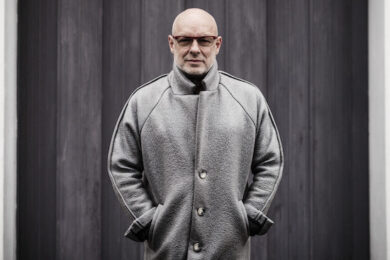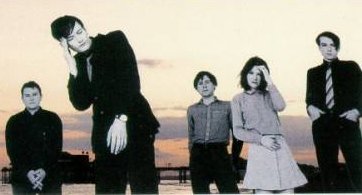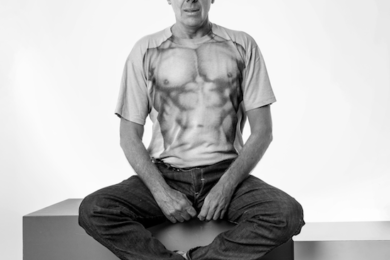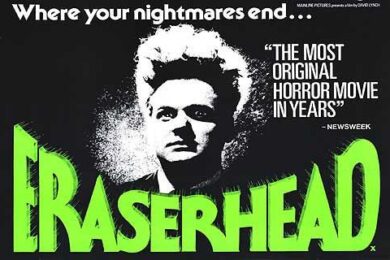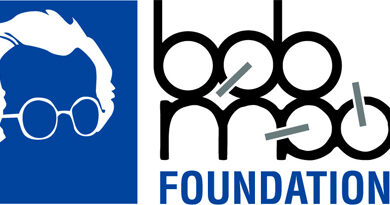I bang on and on about Yo La Tengo, but that’s OK, because they are, of course, the perfect indie rock band. They embody patience, gentleness, and restless-yet-humble experimentation to such a degree that, to me anyway, these virtues have become positively Yo La Tengo-nian. The Leaf Library’s new collection of singles and one-offs, Library Music: Volume One, makes it clear that the group has long held these very same traits to heart as over the years they’ve crafted a diverse, beautiful, and humane body of work that might even give YLT a run for its money. This comp works as both a great point of entry for new fans of the band and as a testament to their enduring excellence. Let’s hope they stick around long enough to give us volumes two and three and four and on and on.
In the past, Suzi Analogue has aptly referred to her series of Zonez mixtapes that ran from 2016 to 2019 as a “mood board,” a space where her work could be presented in its most vivid, relentlessly forward-thinking form – the sound raw, unfiltered and intense. This compilation captures a number of the series’ finest tracks, showcasing both the breadth of Analogue’s scope, and a host of killer feature spots from hip hop’s experimental outer reaches.
The fourth instalment in East London label Nervous Horizon’s V/A series places a particular focus on low-BPM club music. Exploring dembow, dancehall and precision-engineered sound design, tracks from key label artists such as TSVI, Wallwork and Ehua, as well as newcomers to the imprint like Aquarian, Josi Devil and Ultima Esuna, serve as a firm reminder that you don’t need high tempos to keep peak-time dancefloors moving. And if you still think you do, further standout contributions from DJ Plead and Nyege Nyege Tapes affiliate Chrisman have you covered on that front anyway.
For the curious, there is much to enjoy in Frank Black & The Catholics’ Complete Studio Albums. The band hit their stride on 1999’s Pistolero, with no small part played by the recruitment of guitar wiz Rich Gilbert. Indeed, songs like ‘So Hard To Make Things Out’ feel written as an excuse to release his expressive Crazy Horse-style wig-outs. That’s not to say he lost his knack for oddball songsmithery. ‘I Love Your Brain’ honours the cerebral over the physical nature of attraction. Well, sort of. “I wanna sleep with your brain!”, he cries. If Thompson were to slyly slip the spiky ‘I Switched You’ into the setlist of the reunited Pixies, it would take any audience’s breath away.
Opener ‘Simple Headphone Mind’, a song which Stereolab and Nurse With Wound collaborated on, is a counter to the idea that listening to Stereolab has to be an intellectual challenge. ‘Simple Headphone Mind’ is a song made out of 100 percent pure cashmere, the result of Stereolab sorting out a basic track and passing it on to Steven Stapleton of Nurse With Wound to do with it what he wished. Continuing the slickness of
Emperor Tomato Ketchup released a year prior, the stereo image here is pretty fucking incredible and has to be listened to on headphones to be really appreciated – rather than acting as a sonic onslaught, it’s seductively infiltrating the space around your head. If you shut your eyes, it’s hard to pinpoint where you are in this song: bird tweets collapse into slurring analogue synths, before finally reaching its sluggish conclusion, the repetition of the ominous, yet bizarrely relaxing phrase “MILKY WHITE” as though you’re coming out of the end of a very long tunnel and seeing daylight for the first time. Who can really say. Stereolab and Nurse With Wound aren’t going to spell it out for you.
The self-titled debut from Cheval De Frise, originally released in 2000, gets a beautiful deluxe reissue with some quite splendid extra posters/artwork. The duo featured Vincent Beysselance and Thomas Bonvalet – who now records as L’Ocelle Mare – on guitar. While rooted in American post-hardcore, Cheval De Frise feel distinctive at least in part due to Bonvalet’s use of an amplified classical guitar – he switches into distortion but frequently we hear his nimbleness with the clean nylon string sound, the clear strumming and knotty-but-bright arpeggios – but Beysselance matches him for control, fluidity and invention.
In 1968, at the height of his powers and riding on the acclaim of two classic Blue Note albums, pianist Cecil Taylor withdrew from public performance, turning his energies to education. He returned to the stage in 1973, performing with his old trio with alto saxophonist Jimmy Lyons and drummer Andrew Cyrille, now joined by bassist Sirone. A shorter quartet piece and a piano solo from that Town Hall concert in New York were released as Spring To Two-Blue-J’s in 1974, but the 80-minute core of the evening had gone unreleased until his beautifully recorded set surfaced digitally this year. Taylor didn’t lose a step, performing with galvanic intensity and focus, an early example of pushing his music full-blast.
This live session by Tomasz Stańko Quintet is a remarkable discovery made in the archives of Bremen Radio half a century after The Polish trumpeter’s first serious band formed. His quintet consisted of excellent musicians and toured abroad more often than in Poland. They started playing ‘wooden music’ in the early 1970s, which means that all the members, apart from the leader, have only been playing wooden instruments. They create crazy improvisations and impulsive solos culminating in the passionate playing of Zbigniew Seifert on electrified violin, and Bronisław Suchanek on double bass. The ‘woodiness’ is especially noticeable when they both play on strings using their fingers or bows which give them unlimited possibilities, resulting in exhaustive and addictive improvisations.
This contribution to Resident Advisor’s long-running podcast series by UK DJs Hamish & Toby – responsible for the bookings at Dimensions Festival and London club The Pickle Factory respectively – was recorded, in their words, at “a pleasingly raw warehouse in South Philly” back in May of this year. A demanding listen at four hours, it takes you through what you might expect to hear during a full-length club set from the duo as they trace connecting dots between tech-house, UK garage, breaks and various other groove-laden club sounds old and new, but mostly unidentifiable. Telling RA it’s their favourite set recording that they’ve shared from over the years, they added that “it’s about as locked in as we’ve ever been, and the tunes go all over the map, which is very much our bag.” Definitely worthy of setting aside some time to lock in with them.
The Artificial Intelligence series on Warp took ambient music to a completely new dimension over the course of eight albums, released between 1992 and 1994. The sleeve image from the original AI compilation that kicked it all off featured a robot sat in an armchair blowing smoke rings with headphones on, and the album’s subtitle, ‘Electronic Listening Music From Warp’, gave a crystal-clear image of where the label felt this album would be best enjoyed. This was post-rave music made more for the mind than the body (or “techno untethered from the dance floor,” according to Joe Muggs, writing in The Wire in 2013). The compilation laid down the blueprint for ambient techno, and was remarkable for showcasing the early works of a group of artists who would go on to define electronic music for years to come – Autechre, Black Dog Productions, Aphex Twin (as Polygon Window), B12, Speedy J, Richie Hawtin (as F.U.S.E.) and many others. The six artists mentioned also released albums as part of the series, all of which are incredible.
This highly energetic showcase of novel Latin American club aesthetics by Miami club ambassador Nick León is one of the freshest mixes of the year, featuring everything from his signature futuristic dembow techno mutations and Villalobos-style tribal house to hard drum stomping and eclectic dancefloor riddims with a Latinx flavour.
Fifteen years after its original release, the newly remastered Tan-Tan Therapy sounds as strange and enchanting as ever. A suite of lullabies from the end of the world with tender, Satie-esque interludes, the whole thing as fragile and exquisite as a fabergé egg.
In
Grizzly Man, much of what Richard Thompson has learned and created comes to the fore with a kind of weatherbeaten ease. At times, it feels almost like a Western soundtrack, one where the music of these islands meets the vast North American skies. For all his meticulous notes and explorations, Thompson has a superlative sense of space, knowing what to leave out as well as include. The music is evocative not only of the landscape but Treadwell’s psyche, a deceptively gentle river on the surface, hiding currents, whirls and debris that shadow the surface periodically. There is a homely feeling throughout, punctuated by sudden jarring trespass. Though his guitar style is all his own, it’s not a million miles from the atmospherics of Ry Cooder’s
Paris, Texas or Neil Young’s
Dead Man score. By improvising to a screening of the film, intentionally or not, Thompson embodies the only effective response we can have with nature, which is simply to respond to it, with due care and respect, otherwise we risk being consumed, individually or collectively, whether bear attacks or climate change.
We take it as read today that Suicide is to the 1970s what the Velvet Underground is to the 1960s, that is to say the NYC sonic exemplar of choice. But this perception wasn’t always the case. Contemporaneously the pair were despised: most unable to accept synthesised ‘rock’. What was initially thought to be incomprehensible was revealed, in time, to be basically quite traditional. Suicide’s musical roots in 1950s doo-wop are easy to trace. The band’s unique trick was to combine Elvis-like crooning with drone influences from the likes of La Monte Young and John Cale. Martin Rev’s Farfisa organ stabs borrow pop nous from the likes of ? and The Mysterians. Paradoxically, these antediluvian pilferings made Suicide the sound of the future. This compilation proves Suicide were ahead of the pack. And it is also true to say they were very much in tune with the American art scene of the period. Suicide might even be regarded as late Pop Art, younger brothers in spirit to Andy Warhol.
Not exactly one for the “people” who “wanna hear songs,”
Test Patterns: Vol. 1 contains two versions of Monster Magnet’s singular opus. One is that which first took up the second side of the 1989 demo cassette
Forget About Life, I’m High On Dope. The other is new remix of the same cut, overseen by McBain. We don’t know what the plan is for further volumes of what is presumably the
Test Patterns series but you’d think those late-’80s demo tapes would be worth issuing officially in full. (For the time being, you can hear the uploads on YouTube.) Although it is of course based around the same repeated, lunging riff, the demo ‘Tab’ provided on
Test Patterns: Vol. 1 has a different feel to the later rendition. It was recorded as a trio who sound like they’re playing in a poorly lit basement owned by a typically amoral landlord who refuses to deal with the rising damp, dry rot and infestations of insects the size of those from
Starship Troopers. The players may also have been trying to distract themselves from such desolation by being out of their minds on illegal recreationals.
2002 found Sunburned Hand Of The Man operating with little care for the era’s multitude of scenes and circuits, ploughing ahead with an intense psychedelic voyage that was entirely their own. 20 years later, the sound they create on Headdress is still as idiosyncratic as ever, a wig-out of the very highest order.
For his first solo expedition after the split of underground heroes Heldon, Richard Pinhas reined in the guitars and delivered this chilly, but at times also fantastically lush, masterpiece. ‘The Last Kings Of Thule’ revolves around a crunching machine rhythm but the three parts of ‘Iceland’ and ‘Greenland’ are widescreen synth fantasias to rival Vangelis or Tangerine Dream.
Though recorded almost 50 years ago, this live set still rages with as much relentless and chaotic force as it did then – a glorious, tumbling mess of percussion from Han Bennink, piano from Fred Van Hove, and an extraordinarily lively display on saxophone and clarinet from Brötzmann himself. It’s challenging music, certainly, but approach it open-hearted and you’ll be rewarded with a recording that more than anything else resounds with a sense of joy.
Shin Otowa (real name Elia Taniguchi)’s
わすれがたみ was recorded in 1974, with Les Rallizes Dénudés bassist Makoto Kubota credited on “guitar, arrangement, and big help.” The album is a collection of shimmering, hazy folk ballads. Beginning with Shin Otowa’s voice unaccompanied, subsequent tracks fill out into richer arrangements, adding ocarina, banjo and mandolin to the acoustic guitar led songs. I can’t speak Japanese, but the tone of these recordings doesn’t need translating, doused in an endlessly captivating, haunting intimacy. Something of a polymath, after recording
わすれがたみ Taniguchi moved to Ibiza. He became an architect, designing buildings and plazas which can still be seen in Tokyo, alongside writing books of poetry, art theory and more.
Poetry is a versatile old dog. It can serve as solace, as cheer, as a bawdy glimpse into adult life. It can rattle our preconceptions and warm our hearts, gift us a home in a barren land, and bore our undercrackers right off. And, sometimes, it can rewire our brains. Through incongruent word-twists synaptic lightning links unsuspecting neurons across previously untravelled brainscapes. With prose that tumbles like raindrops from a shook tree, John M. Bennett does this with at least two plombs on A Flattened Face Fogs Through. So, be warned, this is a space for those who don’t like having their hands held.

